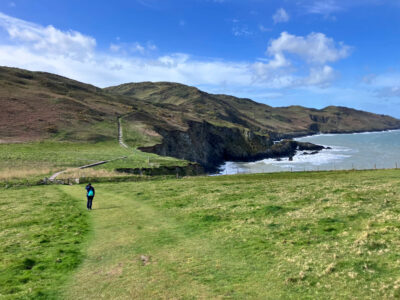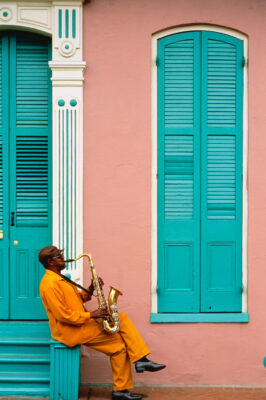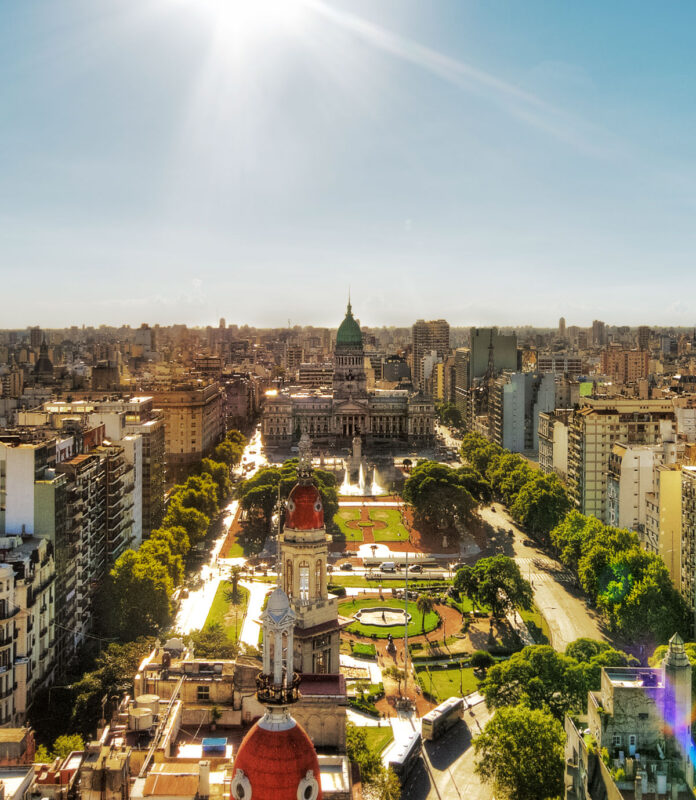
Travel
Free fall in Argentina
“Mango” is the slang for “money” in beautiful Buenos Aires—and right now, with the economy in shambles, there is mucha charla about mangoes.
It was the start of Argentina’s summer when I arrived in Buenos Aires. But it wasn’t just the heat that made me feel light-headed. I was dizzy from the amount of conflicting information I had been given on which exchange rate to use—the official government rate, the “blue dollar” rate (somewhere between official and non-official, and mandating exchange in actual, physical dollars) or the black-market rate—the latter which, unsurprisingly, would prove to be the most widespread and offer the best return.
The country’s economy was in free fall. Days earlier, on November 19, 2023, Javier Milei had been elected president. The far-right candidate, with his wild wolverine locks and bombastic manners to rival Trump’s, had swept to victory on the wave of Argentina’s decades of economic collapse. The capital city was hot and dry and dusty, and any signs of change seemed impossibly far away.
Milei had risen in the polls with the promise to slash the country’s swelling inflation and ever-rising poverty rates. He positioned himself as the macho, social-program-slashing solution who would return Argentina to her former glory—to the boom years at the turn of the century when the country ranked among the top ten wealthiest, with a greater per capita income than Australia and Canada. The nostalgia for Argentina’s past position and wealth—a world of polo ponies, prime steak, deep red wines—haunts the citizenry.
But those echoes of a century ago live on in Buenos Aires’ broad, tree-lined avenues, where architectural grandeur is preserved under layers of dust and dirt and more than a few piles of dog excrement awaiting a pick-up that may never come. The city is still beautiful and full of life and—thanks to the current season—flowers. In fact, Buenos Aires is known for its flora: the ceibo trees which were erupting in towering red blooms; the sprawling rose garden around Parque Tres de Febrero in Palermo; and the formal Jardín Japonés, the Jardín Botánico Carlos Thays, the Poetas Garden, and the Ecopark, where peacocks, nutria, and petite pudu deer walk freely through the riotous blooms.
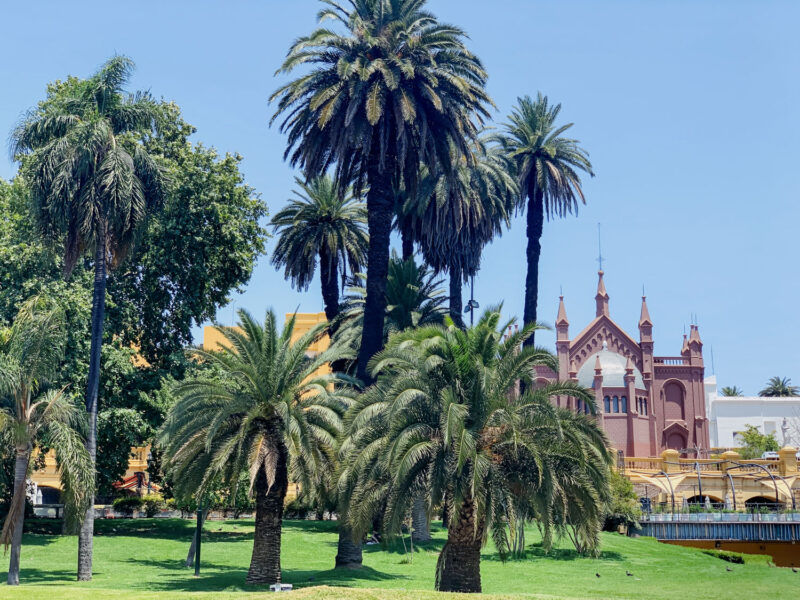
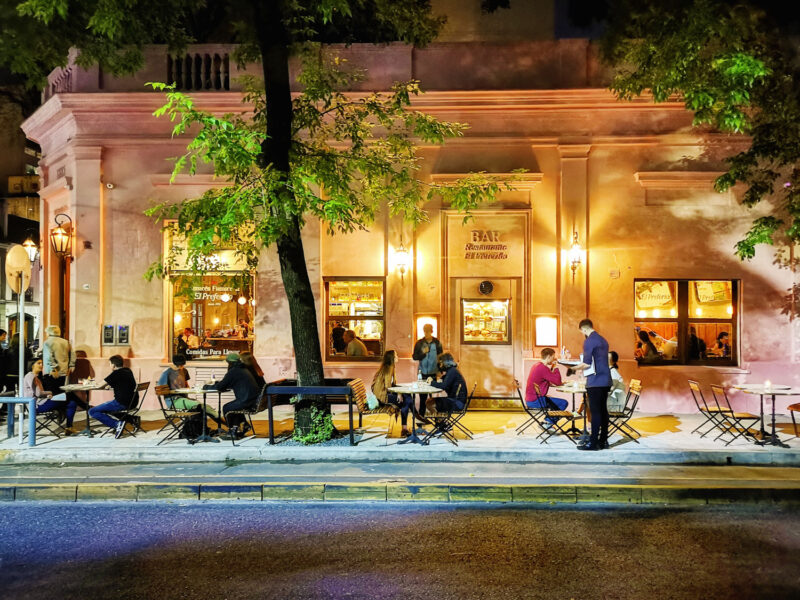
Droves of foreign young people moved here during the pandemic, setting up their digital nomadic lives with cheap rent and even cheaper cafes. Golden age travelers with money stop here, mostly in the summer, before trekking south to Patagonia or Antarctica, conspicuous in their new hiking boots and technical pants.
Alongside them—or perhaps despite them—stylish Argentines linger over coffees and wine at lunch and push their babies in strollers through the parks. Junkies try to peddle their wares on the steps of old marble monuments, and an older woman passes me on the sidewalk, a dime-size hole in the top of her shoe. The sheets at my up-market hotel in Puerto Madero have clearly not been washed. The wine is excellent. Life, in all of its beauty and trouble, continues.
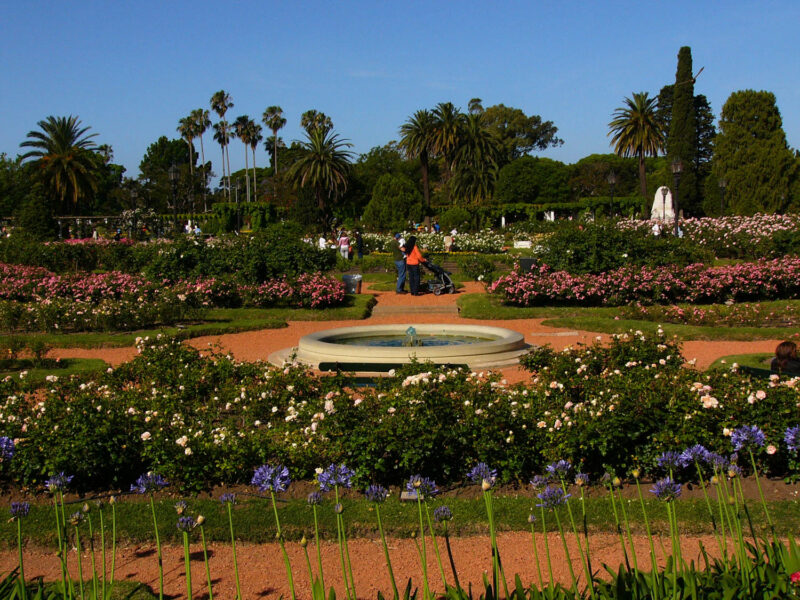
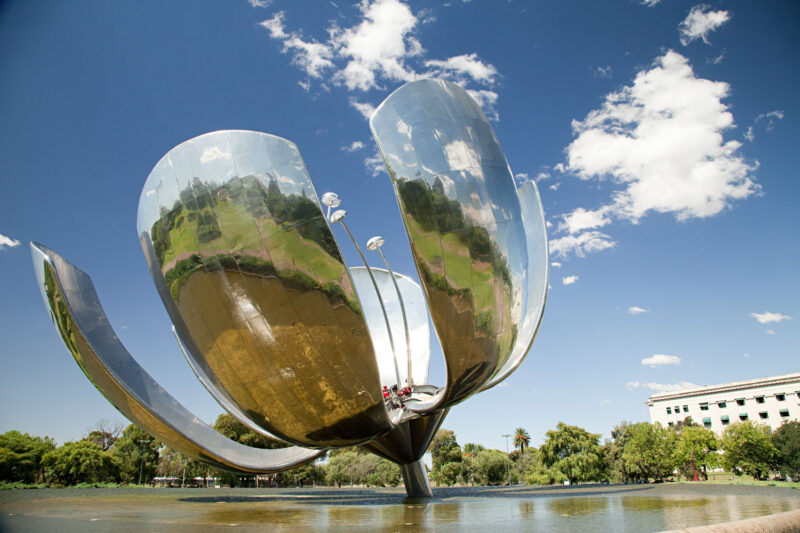
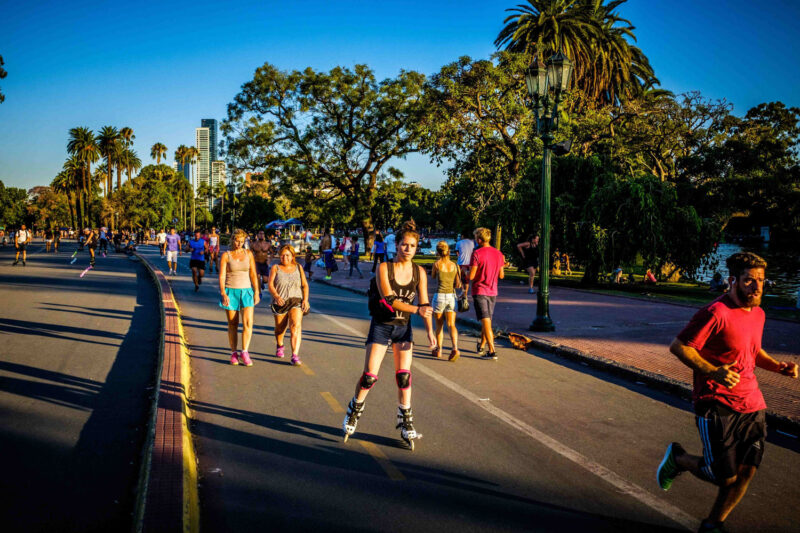
Like many large cities, the divide between very poor and very rich in Buenos Aires is growing at a rate almost as alarming as the peso-to-dollar currency exchange. I was asked to pay in cash at my hotel, in pesos, or better yet, in dollars. The currency is rendering itself more and more useless, and the murmur of worry was felt in the long lines at each Western Union exchange I passed.
I didn’t see any Western Unions in Recoleta, a posh, old-world neighborhood of the city, where couture shopping and five-star hotels stand impervious to the financial and social ravages. Here the country’s economic elite are holding on for dear life. It’s believed that there are more American dollars in Argentina than in any other country outside the US.
I had come for dinner at one of the city’s palaces-turned-hotels—and so too, it seemed, had a group of young people who weren’t allowed in. Instead, they stood outside the hotel’s tall iron gates, signs in hand, hoping to catch a glimpse of an American rocker who was staying inside. They seemed too young to know about the Red Hot Chili Peppers, but then again, everything here seems a little frozen in time. Pictures of Eva Perone are still everywhere. Wine is served with lunch. Citizens smoke like it’s 1965.
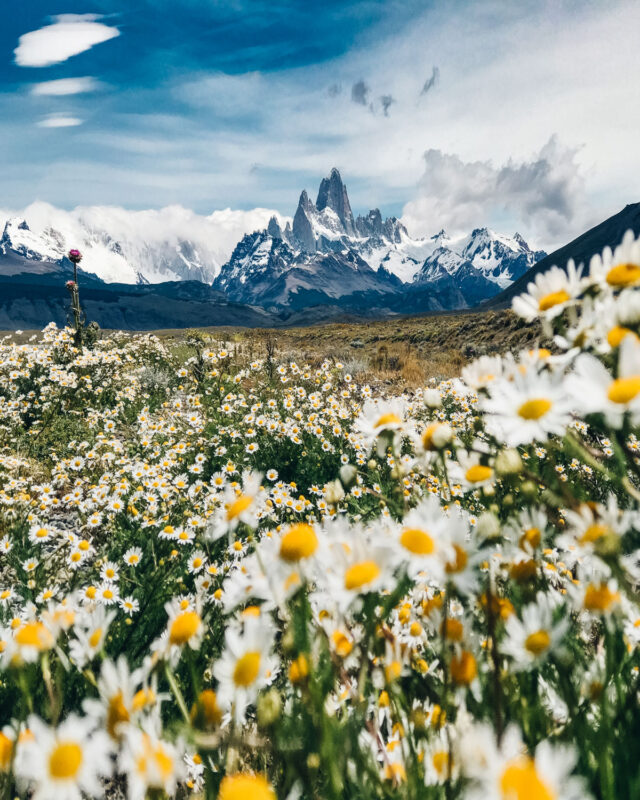
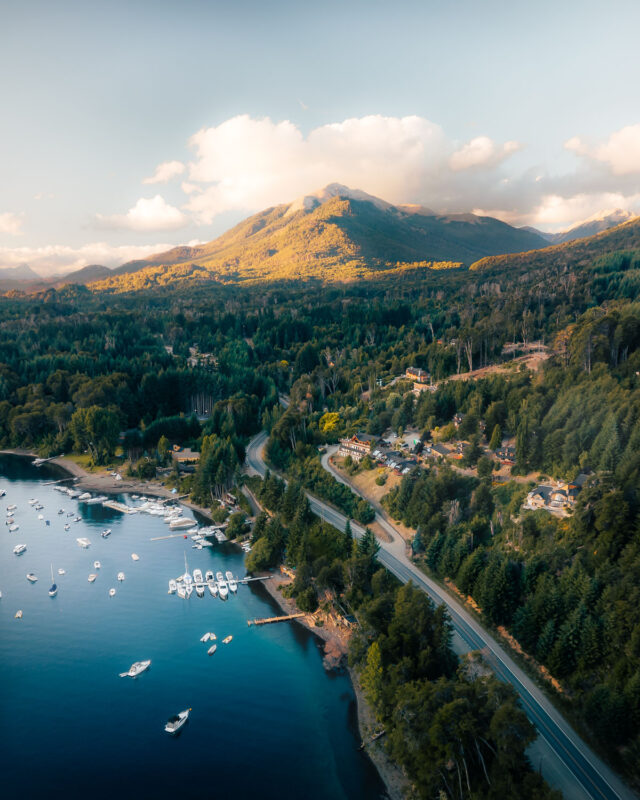
Inside, the hotel lobby is a bit faded and perhaps not intentionally dim. But tables spill onto the patio where diners, Argentines and Americans—oh so many Americans—linger, seemingly impervious to the economic temperature. The Argentines dress for dinner, and especially for dinner here. The Americans, less so, and certainly not the aging drummer who strolled through the restaurant in a sky blue and white cloud leisure suit, hood over his bald head, his feet airing themselves out in sandals.
The menu, heavy on the steak and deep ruby wines, will cost you upward of $200. English and Spanish and smoke—and the faint sound of someone humming something from the Red Hot Chili Peppers—swirls in the air. If there’s worry about Milei, about the peso with its plummeting value, people are hiding it well. After all, their pockets are likely lined with American dollars, and the flowers are blooming, the summer is just beginning. A free fall, or a free for all? Who’s to say.
Hero photo of Buenos Aires by Tim Snell / Getty images

